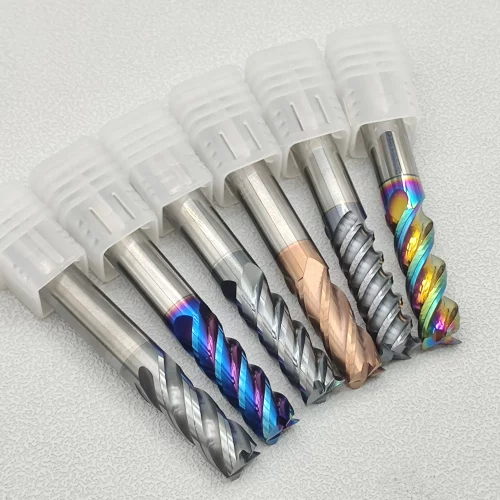When it comes to efficient machining, the selection and use of the right tools are of paramount importance. One such tool that plays a crucial role in milling operations is the solid carbide roughing end mill. This article aims to guide you on how to select and use these end mills to achieve optimal results.
Solid carbide roughing end mills offer numerous benefits that customers prioritize when making a purchasing decision. Firstly, they are highly durable due to the use of solid carbide as the cutting material. This allows for prolonged tool life, reducing the frequency of tool changes and resulting in cost savings. Additionally, the hardness of solid carbide ensures excellent resistance against wear and abrasion, enabling efficient machining even in challenging materials like stainless steel or hardened steel.
Furthermore, solid carbide roughing end mills are designed to provide exceptional cutting performance. With their specialized geometry and varying helix angles, these end mills efficiently remove large amounts of material in a short span of time. This makes them ideal for roughing operations, where the goal is to remove excess material quickly and prepare the workpiece for further precision milling. Whether it’s creating deep pockets, slots, or contours, solid carbide roughing end mills deliver high material removal rates and reduce machining time significantly.
The selection of the right solid carbide roughing end mill depends on several factors. Firstly, the type of material being machined is crucial. Different materials require varying cutting parameters for optimal performance. For instance, when machining aluminum, a roughing end mill with a high helix angle and a polished flute can prevent chip buildup and ensure smooth material removal. On the other hand, when working with steels or hard alloys, a roughing end mill with a more robust design and coated flutes can provide the required strength and heat resistance.
Another crucial consideration is the desired surface finish. While roughing operations focus on material removal, achieving a good surface finish is still necessary for subsequent operations or final product quality. Therefore, selecting a roughing end mill with appropriate flute design and edge preparation helps maintain tolerances while ensuring a smoother surface finish.
It is also essential to consider the machine’s capabilities, such as spindle speed and horsepower. Solid carbide roughing end mills come in various sizes and configurations, allowing you to match the tool with your machine’s capabilities. Utilizing the full potential of your machine ensures efficient and productive machining.
To make the most of solid carbide roughing end mills, proper tool usage is vital. The efficient use of these end mills involves controlling the feed rate and optimizing the cutting speed. To prevent excessive tool wear and prolong tool life, it is crucial to choose the right feeds and speeds based on the specific application and material being machined.
In conclusion, selecting and using solid carbide roughing end mills can greatly enhance machining efficiency. By considering factors like material type, surface finish requirements, and machine capabilities, customers can make informed purchasing decisions. These end mills offer significant benefits such as durability, cutting performance, and time-saving. By understanding how to optimize their usage, machinists can achieve exceptional results in their milling operations.
